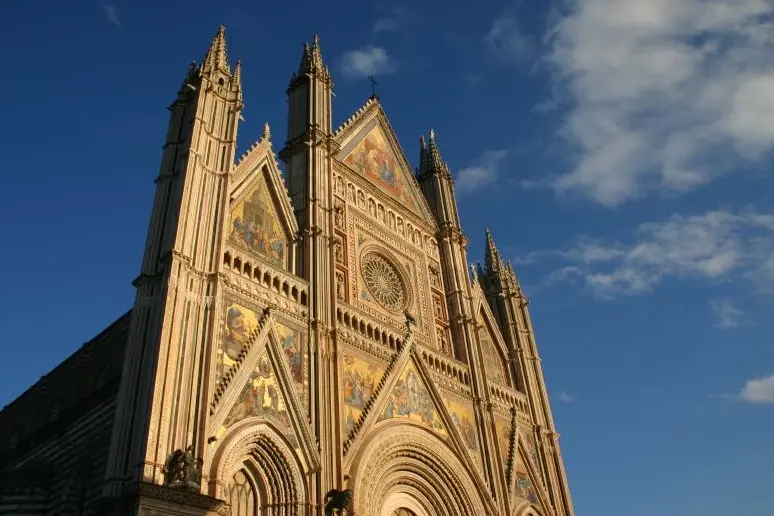
The cathedral of Orvieto, the city and the historic center

The Cathedral of Orvieto is one of those Italian monuments that shine with their own light and that it is impossible not to know. Orvieto is sometimes referred to as the city of the cathedral, although Orvieto has much more to offer, precisely because of its imposing beauty, solemnity, and personality. The Umbrian city of Orvieto is located in the province of Terni and is famous throughout the world. The cathedral itself attracts many onlookers and believers precisely for its unique beauty and the charm that resides in the architecture of the entire city.
As we have said, the Cathedral is a very symbolic part of the city, but there are many other reasons to visit Orvieto. The city of Orvieto is very well organized for tourists and appreciated in all its parts. Here you can fully relive the medieval era, walking through characteristic streets and visiting suggestive places such as the fountain of San Patrizio. So let's go and discover this wonderful city.
The Duomo of Orvieto or Cathedral of Santa Maria Assunta
As soon as you arrive in the city, you cannot help but notice its imposing structure. The Cathedral of Orvieto is an example of Gothic architecture among the most important in Italy, whose construction began in the thirteenth century by order of Pope Nicholas IV. Initially, the cathedral also had Romanesque features, which were immediately adapted to the more complete Gothic style. The façade is the most beautiful one that can be seen, especially on a sunny day: the perfection with which it has been built is found in every detail and begins with the vertical buttresses, each of which ends in a spire that divides the space into three different sectors; the perfection continues along the horizontal lines that divide the façade into three parallel bands, delimiting the base, the reliefs and the loggia with arches. Three triangles are repeated in the upper part of the cornices, enclosing a rose window with segments. The bas-reliefs found in the lower pillars are truly remarkable, representing the stories of Genesis, the Messianic events, and the Last Judgement.
Inside, the mammoth church is divided into three naves with a wooden vaulted ceiling. There are several chapels, stained glass windows, the choir, and the presbytery, which depict the life of the Madonna to whom the cathedral is dedicated. The examples of Gothic art do not end here: you can also admire the Chapel of San Brizio, dedicated to the patron bishop of Orvieto, and the Chapel of the Caporetto, and end your visit to the Museo dell'Opera del Duomo by deepening your knowledge of the construction of the Cathedral itself.
The historic center of Orvieto
After the interesting visit to the Cathedral of Orvieto, you can take a walk around the city and admire the Torre di Maurizio, along via del Duomo, which marked the construction site of the great Cathedral: on the tower they installed a very modern clock, used here for the first time in Europe, to mark the hour of the 200 workers at work.
Another tower, that of the Moro, is known as Torre del Papa, it marked the crossroads between the four districts that make up the historic center of Orvieto. Another attraction of the city, after the many historic buildings that populate it, is the fountain of San Patrizio: seen from the outside it will appear as a circular structure that emerges from the ground, but it is possible to descend into its depths using a circular staircase that moves around the fountain. It is a really suggestive place that reaches a depth of 54 meters and a diameter of 13 meters.
TOPCAMPING s.r.l. - Via del Brennero 97 - 38121 TRENTO (TN) - P.IVA IT 02249520228
© 2025 All Rights Reserved.











